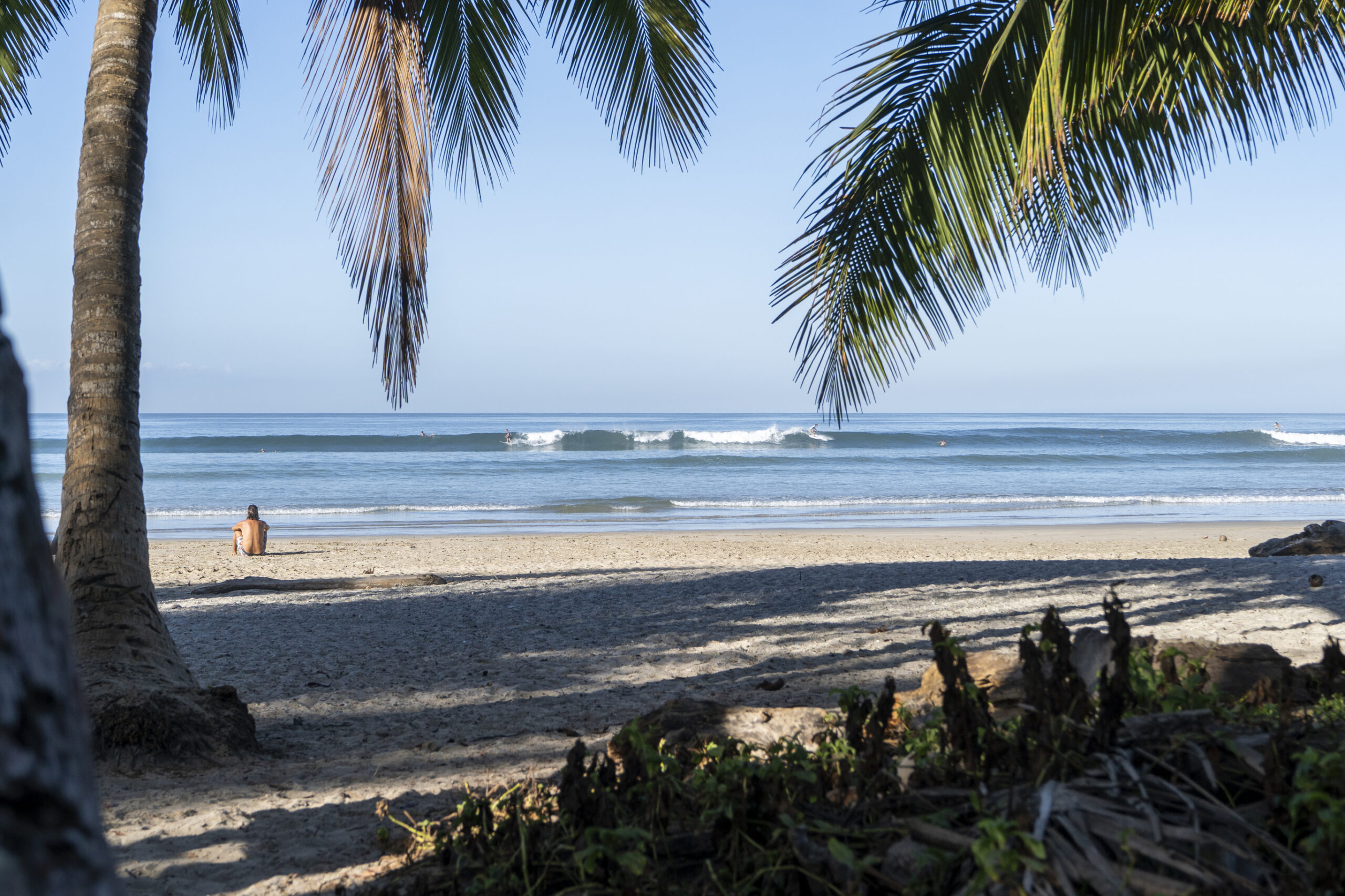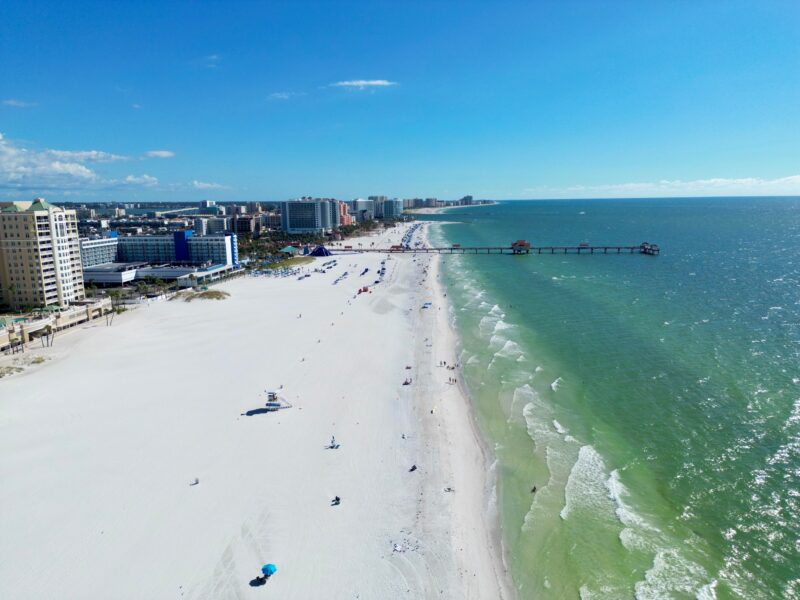Nothing quite prepared me for Santa Teresa. This remote corner of Costa Rica‘s Nicoya Peninsula feels like what Tulum was ten years ago—before the crowds and Instagram hordes descended (though it is becoming increasingly more well known). It’s where digital nomads sip cold brew while watching howler monkeys swing overhead, where yoga studios overlook world-class surf breaks, and where the sunsets are so spectacular they feel almost cinematic.
After spending several weeks here, I left feeling like I wanted to drop everything and move to this bohemian beach town. You get pristine coastline, incredible biodiversity, and that laid-back surf culture that’s completely infectious. There’s an authenticity here that’s harder to find elsewhere—no resort chains, no cruise ships, just pure Costa Rican pura vida at its finest.
It’s remote, yes, but that’s precisely the point. This is the beach town for travelers ready to disconnect and dive deep into one of Central America’s most captivating destinations.
Beaches
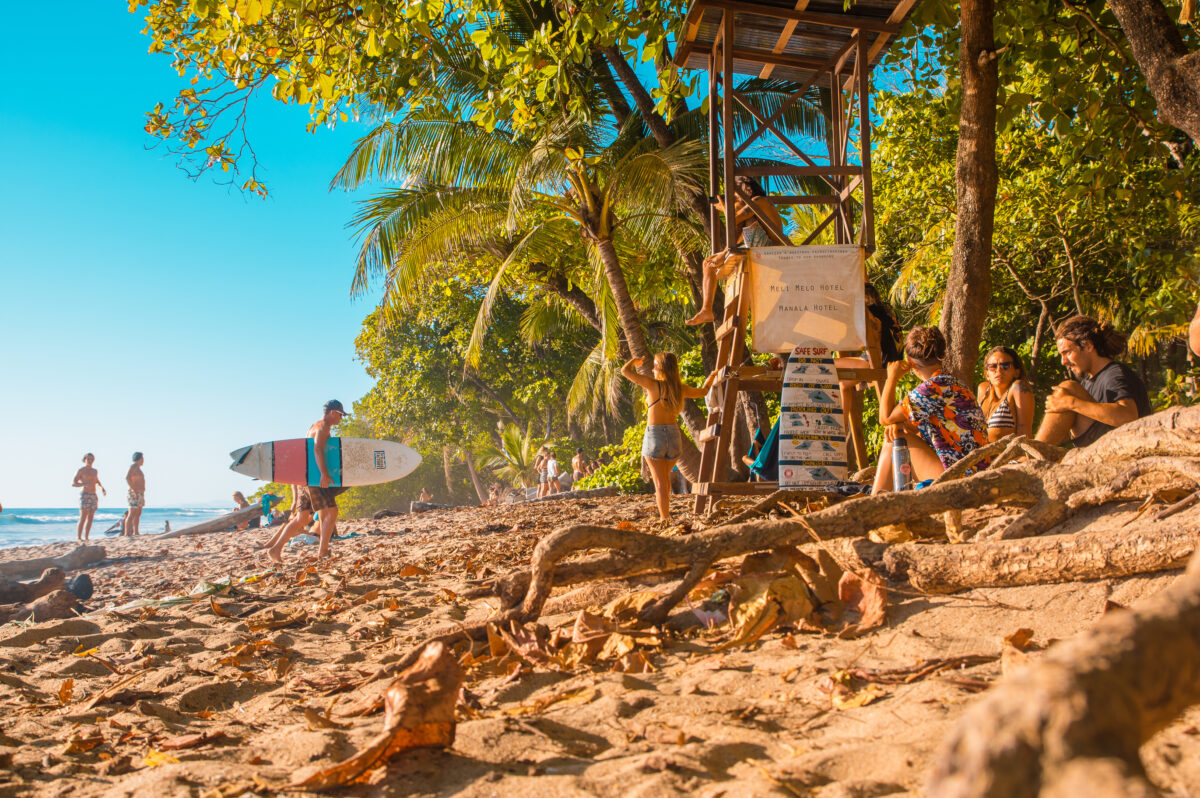
One of Santa Teresa’s biggest draws is its spectacular coastline—nearly 4 miles of golden sand backed by lush jungle, with world-class surf breaks that attract riders from around the globe.
The main beach runs the entire length of town, from Playa Carmen in the north to Playa Hermosa in the south. You can walk for miles without seeing another soul, just pelicans diving into perfect turquoise waves and howler monkeys calling from the treeline.
For surfers, this is paradise. The breaks here are consistently good year-round, with something for every skill level. Beginners flock to Playa Carmen, where the waves are gentler and several surf schools offer lessons. More experienced riders head south to the rocky point breaks at Playa Santa Teresa, where powerful waves crash against volcanic rock formations.
I spent my mornings at La Lora Amarilla, one of the most famous surf breaks, watching pros carve through head-high barrels while sipping coffee from a local cart. Even if you don’t surf, it’s mesmerizing to watch.
Beyond surfing, the beaches offer incredible snorkeling around the rocky outcrops, horseback riding at sunset, and some of the best beach walks in Central America. Playa Hermosa, just south of town, lives up to its name with pristine sand and excellent swimming conditions when the surf isn’t firing.
The sunsets here truly deserve their own paragraph. Every evening feels like a celebration as locals and travelers gather on the beach to watch the sky explode in shades of orange, pink, and purple.
Adventures
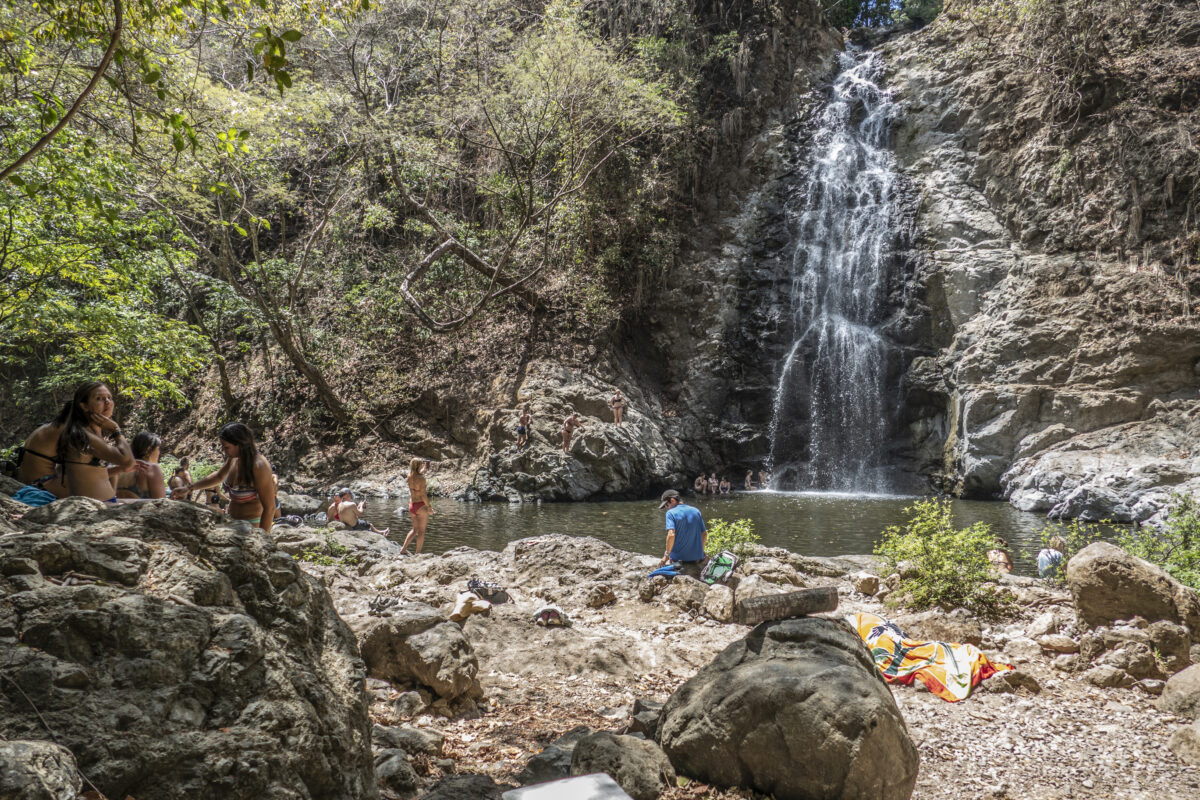
Santa Teresa’s location on the Nicoya Peninsula makes it an ideal base for exploring some of Costa Rica’s most spectacular natural attractions. The surrounding area is a playground for adventure seekers, with activities ranging from canopy tours to waterfall rappelling.
Cabo Blanco Nature Reserve, just 20 minutes south (though about an hours drive due to rough roads), was Costa Rica’s first national park and remains one of its most beautiful. I spent a morning hiking through dry tropical forest, spotting howler and white-faced capuchin monkeys, coatis, and over 150 bird species. The trail leads to a secluded beach where you might encounter nesting sea turtles (depending on the season).
For waterfall fanatics, Montezuma Falls is a must-visit day trip. The 30-minute drive through winding mountain roads leads to a series of cascading falls perfect for swimming and cliff jumping. You can join a local guide to show you hidden pools and share stories about the area’s indigenous history (highly recommended).
The canopy tours here rival anything in Manuel Antonio or Monteverde but with far fewer crowds. Zip through the treetops at Canopy del Pacifico, glide past toucans and scarlet macaws while getting spectacular views of the coastline below. The final zip line deposits you directly onto the beach.
Horseback riding at sunset has become something of a Santa Teresa tradition. Several operators offer rides along the beach and through nearby hills, timing the return perfectly for golden hour.
For those seeking even more adrenaline, ATV tours wind through jungle trails to hidden beaches and viewpoints. I took the tour to Mal País, the neighboring village, stopping at tide pools teeming with marine life and secluded coves perfect for swimming.
Food
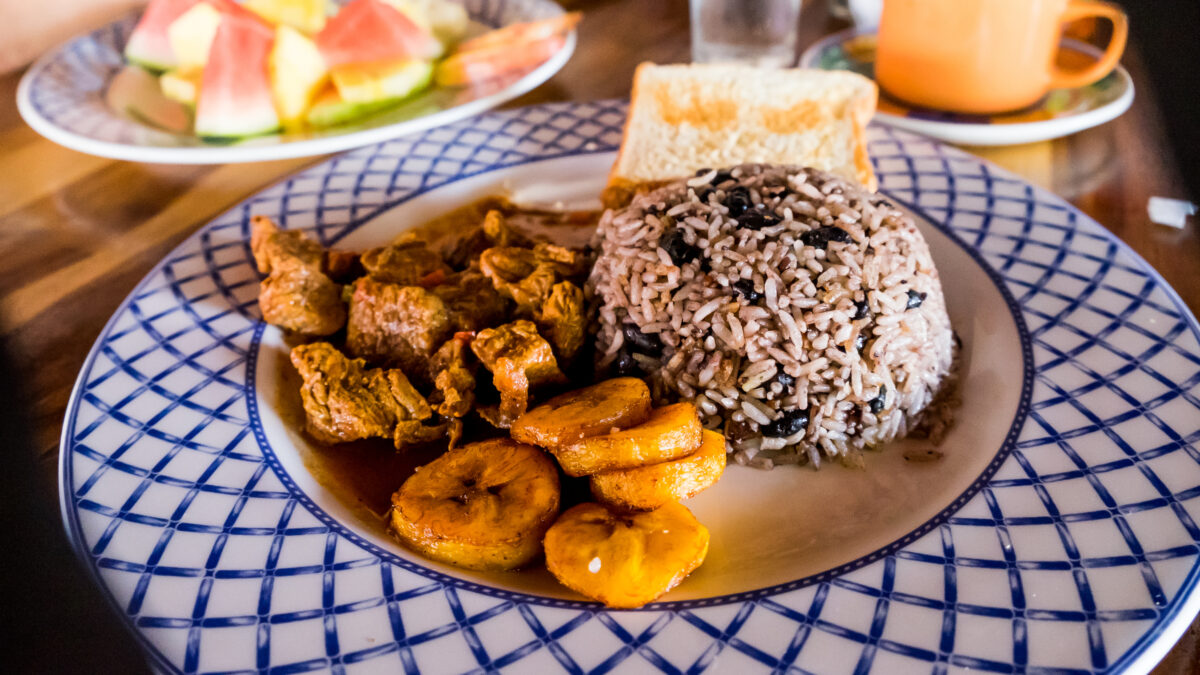
Santa Teresa’s dining scene perfectly captures the town’s international yet authentic vibe. You’ll find everything from traditional Costa Rican casados to innovative fusion cuisine created by expat chefs who’ve made this place home.
Start your day at The Bakery where the croissants and pain au chocolat would make Paris proud. Pair it with locally roasted coffee, and you have the perfect breakfast while planning your day.
For traditional Costa Rican flavors, Soda Tiquicia remains unbeatable. This local joint serves massive plates of gallo pinto, fresh fish, and plantains at prices that make you want to stay for weeks. The casado here—rice, beans, salad, plantains, and your choice of protein—is comfort food at its finest.
The international scene is equally impressive, too. Al Chile Viola serves up wood-fired pizzas and handmade pasta dishes like bull’s balls ravioli prove you don’t need to be in Rome for exceptional Italian food. Also don’t miss the food trucks and beach stands that set up along the main road each evening. From fish tacos to empanadas to fresh fruit smoothies, these casual spots often serve the most memorable meals.
Nightlife

Santa Teresa’s nightlife reflects its bohemian soul—laid-back, authentic, and focused more on connecting with people than pounding shots. This isn’t Cancun; it’s more like gathering around a bonfire with fellow travelers and locals.
Rocamar is the perfect beachfront spot to start your evening, with swings and daybeds right on the sand where you can watch the sunset over specialty cocktails. The vibe here transitions seamlessly from golden hour relaxation to nighttime energy.
For those craving something livelier, La Lora Amarilla remains the town’s go-to dance spot. This dive bar stays open late and packs in a mix of tourists and locals dancing to reggae, trance, and live music. It’s where you end up when you’re not quite ready for the night to end.
If you’re looking for something more chill, Nativo Sports Bar in Playa Carmen offers a classic hangout vibe with drink specials and screens showing surf videos and games. Their Taco Tuesday deal—all-you-can-eat tacos and drinks at a special price—has become a weekly tradition for many.
Or, you could just grab a bottle of tequila, head to the beach, and join the impromptu gatherings where travelers and locals share stories under the stars. Saturday afternoons also bring the farmer’s market with live music and a community feel that captures what makes this place special.
Where to Stay
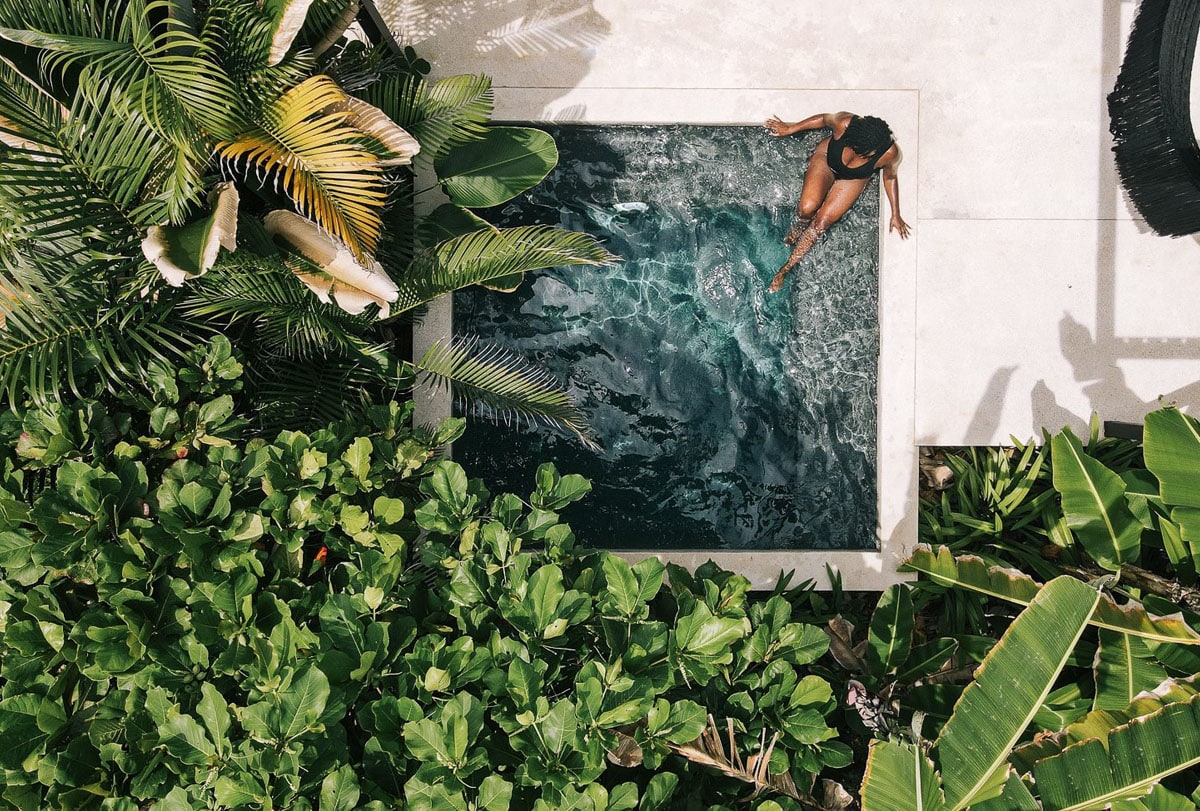
Santa Teresa’s lodging options reflect its diverse community, ranging from backpacker hostels to luxury boutique hotels, all maintaining the town’s bohemian aesthetic.
At the luxury end, Nantipa is the undisputed champion—a stunning boutique property. The infinity pool seems to blend seamlessly with the Pacific, and the open-air suites feel like stylish tree houses. Sustainability is woven into every detail, from solar power to organic gardens that supply the restaurant.
For a solid mid-range option, Tropico Latino offers beachfront bungalows with private terraces just steps from the sand. The pool area is perfect for afternoon relaxation, and their on-site restaurant serves fresh seafood with an unbeatable ocean view.
Budget travelers have excellent options too. Somos stands out with its pod-style dorms that offer more privacy than traditional bunks, plus an on-site cafe, bar, and even a surfboard shaping studio. Lost Boyz Hideout is another solid choice, with cheap dorm rooms, a huge pool, and a lively social scene that makes meeting people effortless. For something more tranquil, Hostel La Posada offers a relaxed vibe with a swimming pool, free breakfast, and air-conditioned rooms at prices that’ll make you want to extend your stay.
For something uniquely Santa Teresa, consider Hermosa Treehouse. These cabins are architectural marvels built around massive trees, with walls that open completely to the jungle. Falling asleep to howler monkey calls and waking up to toucans is an experience you won’t find anywhere else.
Getting There & Around
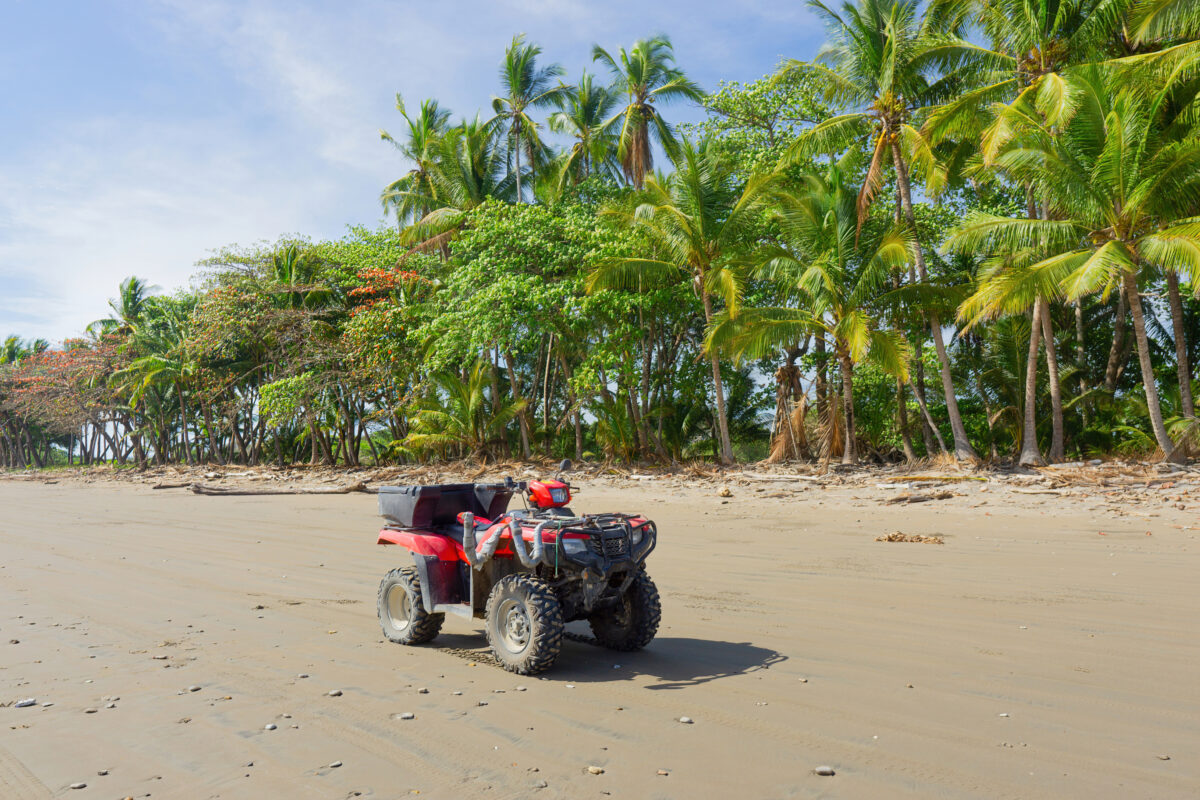
One of Santa Teresa’s charms is its remoteness, but that same isolation can make getting there feel like an adventure in itself. The journey typically involves multiple modes of transport, but the destination makes every bumpy road and ferry ride worthwhile.
Most travelers fly into San José’s Juan Santamaría International Airport, then have several options for reaching Santa Teresa. The most scenic route involves driving to Puntarenas (about 90 minutes), taking the ferry across the Gulf of Nicoya to Paquera, then driving another hour through winding mountain roads. The ferry ride offers spectacular views and a chance to spot dolphins.
For those seeking convenience, small charter flights operate from San José to nearby Tambor Airport, cutting travel time to under two hours total. Several companies offer this service, and sharing costs with other travelers makes it surprisingly affordable.
The overland route from Liberia Airport takes 3-4 hours but avoids the ferry. The roads have improved significantly in recent years, though the final stretch still requires careful navigation during rainy season.
Once in Santa Teresa, everything is walkable or bikeable. The main road runs parallel to the beach, with most restaurants, shops, and accommodations within easy reach. Many places offer bicycle rentals, and there’s something magical about pedaling to dinner with the sound of waves in your ears.
ATVs are popular for exploring further afield, and several rental companies offer everything from basic models to high-end machines perfect for adventure tours. Just remember that road conditions can be challenging, especially during rainy season.
When to Visit
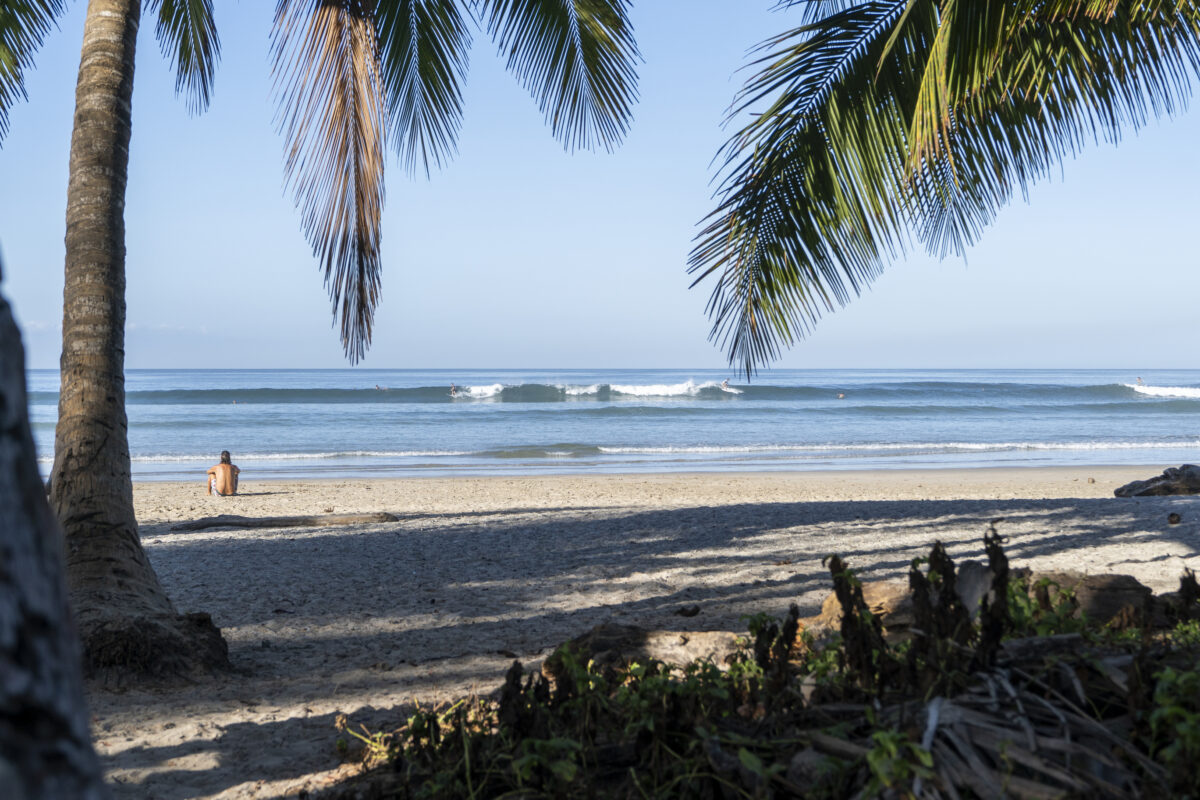
Santa Teresa enjoys Costa Rica’s classic tropical climate, with distinct dry and wet seasons that each offer unique advantages.
The dry season (December through April) brings consistent sunshine, minimal rainfall, and the most reliable surf conditions. This is peak season, so expect higher prices and more crowds, though “crowded” here still means plenty of space to breathe. The trade winds during this period create perfect conditions for kitesurfing and windsurfing.
The wet season (May through November) shouldn’t be dismissed (this is personally my favorite time)! While afternoons often bring dramatic thunderstorms, mornings are typically clear and spectacular. The landscape becomes incredibly lush, waterfalls flow at full force, and you’ll have beaches nearly to yourself. Plus, accommodation prices drop significantly, and the rain usually comes in short, intense bursts rather than all-day drizzle.
For surfers, the wet season actually produces more consistent swells, particularly from August through October. The storms that pass through the Pacific generate long-period waves that create some of the year’s best surf conditions.
Wildlife lovers should also consider visiting during the wet season because animals are most active, and nesting sea turtles visit nearby beaches.

